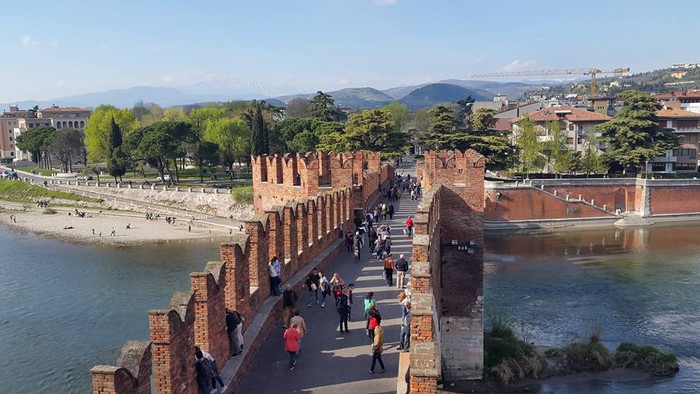One day In Verona
a soli 70 km di distanza da Relais Mozart
The itinerary begins from the Lapidario Maffeiano Museum, opened in 1745 thanks mainly to the collection of Scipione Maffei, a leading figure in Verona culture.
Further along is the lively and busy Piazza Bra with the impressive Arena.
Continue along Via degli Alpini and Stradone Maffei to reach the Church of San Fermo, one of the most significant religious buildings in the city.
Continue along Via Leoni with the Porta Leoni, whose name is given by the roman sarcophagus nearby with two lions on it.
At the end of the street there is the junction with Via Cappello where, according to legend, Juliet's house stands at number 23 with the most famous balcony in the world.
From Via Cappello you reach the charming Piazza delle Erbe, heart of the city since Roman times.
The square is framed by the palazzos and buildings that have marked the history of Verona: Domus Mercatorum, Gardello Tower and Palazzo Maffei. To the right of the square are the 16th century Mazzanti houses joined by an arcade.
From Piazza delle Erbe take Via dalla Costa to go to Piazza dei Signori, also known as Piazza Dante (due to the statue dedicated to him in the centre), which is surrounded by some buildings of extremely important historic and architectural value, like the Loggia del Consiglio, Palazzo del Governo and Domus Nova.
Near the Church of Saint Maria Antica go through the arch between Palazzo Cangrande and Palazzo del Capitanio to reach the Della Scala Arches, an amazing example of gothic art.
The itinerary continues to the Church of Sant'Anastasia, the largest church in Verona and most important gothic monument in the city.
From here you reach Ponte Pietra, which over the centuries has undergone numerous collapses, reconstructions and restorations, which offers a splendid view of the city and river. Cross over the bridge to Via Rigaste Redentore and at number 2 stands the Roman Theatre, one of the most fascinating of Roman buildings.
From Ponte Pietra go along Via Cappelletta to the crossroads with Via Duomo, where the Cathedral stands that was rebuilt on the paleo Christian foundations. Turn back along Via Pigna, Via S. Mamaso and Via S. Egidio to reach Porta dei Borsari, that was built around 100 AD.
Go along Via Borsari to Corso Cavour to reach Castelvecchio which, after the Arena, is the grandest and most impressive monument in the city. It was built in medieval times by Cangrande II della Scala. Finally a pleasant walk along Rigaste San Zeno to reach the San Zeno Basilica, a Romanic masterpiece in Italy dedicated to the city's patron saint.


